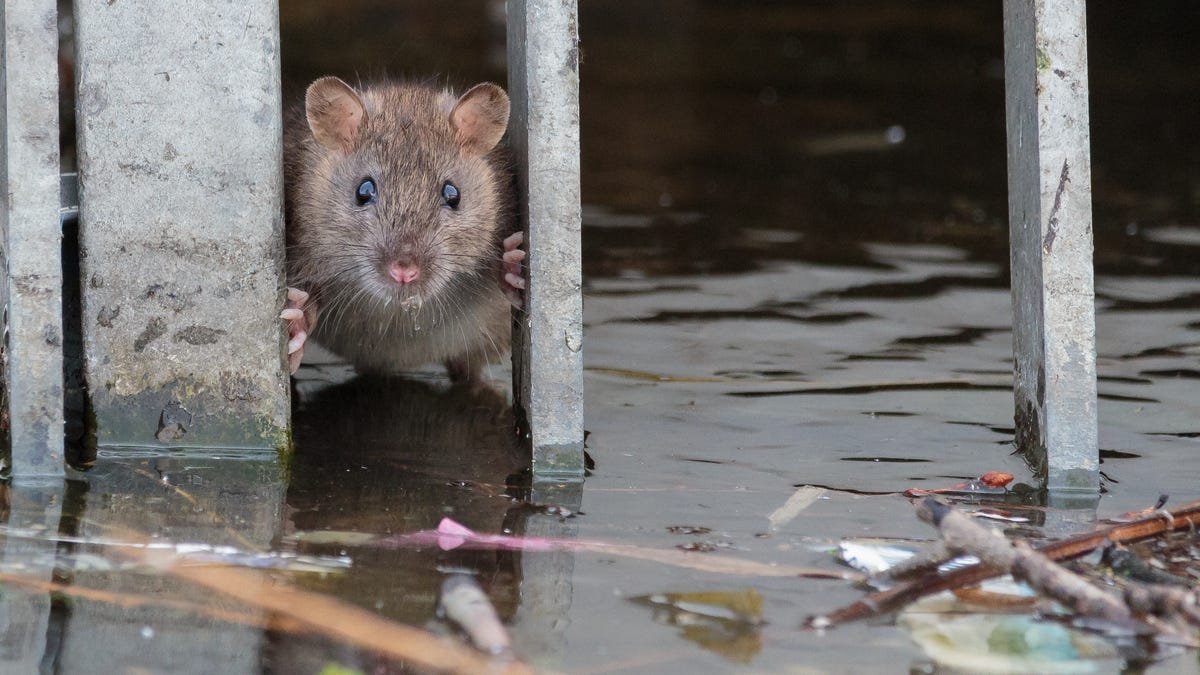No, the Next Pandemic Probably Won't Start With City Rats
All these years, it seems, urban vermin have had a bad rap as the bearers of new diseases. You can blame human bias for that.

Justice for city rats.
Two nights ago, in my New York City studio apartment, I was about to start episode two of the TV show Pachinko. But as the screen silently loaded, my evening was interrupted by a sound most New Yorkers would describe as dreadful. Ominous. It was a squeak. I think.
It's been over 24 hours since then, and I still haven't laid eyes on a mouse. What I have done, however, is spiral down a Google rabbit hole. I went from "Was that just noise from my fridge?" to "Could city mice have COVID-19? COVID-22?"
You might say my stress is human nature. We often think of urban pests as disease super-spreaders, shuffling deadly, alien microbes toward our lungs. And it's a worry that transcends mere paranoia. Scientists have concrete proof of city-dwelling creatures holding weirder pathogens than wild animals, for instance, and rats are responsible for quite a bit of animal-to-human disease transmission. As such, some experts even believe the next pandemic might begin in a city teeming with urban animals.
So imagine my relief, after waking up from a flimsy, fearful slumber, to see new research, published Monday in the journal Nature Ecology & Evolution, that suggests city-roaming pests do not pose as high risk of a novel disease as we might expect. As it turns out, we have a lot of research pointing toward that idea because of human bias.
Like me, some scientists are probably on edge about city animals, so they sort of pay extra attention to them when researching diseases that can infect humans.
"We found that urban species do indeed host more diseases than non-urban species, but the reasons for this appear to be largely associated with the way we study the ecology of disease," Greg Albery, a postdoctoral fellow at Georgetown University and lead author of the study, said in a statement. "We've looked more at animals in our cities, so we've found more of their parasites."
In other words: City mice are unsettling, yes, but they may not be any more dangerous than country mice.
The bias of frightened humans
"There are plenty of reasons to expect urban animals to host more diseases, ranging from their food to their immune systems to their close proximity to humans," Albery said.
To exonerate city critters, like my possible mouse intruder, from their status as the most malevolent of disease reservoirs, Albery and fellow researchers examined data about pathogens hosted by nearly 3,000 mammal species.
In doing so, they found that urban-adapted animals could host roughly 10 times as many kinds of disease, but there were over 100 times more studies published on these city residents than on wild animals.
It's probably because we humans feel like they're the culprits. But what if we're making them the culprits?
Say you have 10 studies searching for pathogens in mammals, but you conduct nine of those studies on city rats. You'd detect more pathogens in these urban rodents by sheer probability, and therefore have a higher chance of finding in these creatures the types of pathogens that can be contracted by people.
If the statistics were switched to five studies on urban animals and five on wild ones, the results might be different. In fact, when Albery's team corrected for the bias, they saw that urban animals turn out to not have more human pathogens than expected.
Remedying the problem
To be clear, this definitely doesn't mean that city pests are disease-free or that you should make pets out of your neighborhood rats.
They are pretty infectious when it comes to pathogens we know about, and it's important to be careful when dealing with them. I, for one, am still very worried there's a mouse watching me as I write this. But the new study's results more or less debunk the belief that city wildlife are "hyper-reservoirs" of new infectious diseases.
"This probably means that urban animals aren't hiding as many important novel pathogens as we might think – those pathogens that might cause the next 'Disease X'," Albery said.
It's still a possibility that such animals could incubate the next pandemic virus, but that possibility probably isn't any more likely than other factors, like wild animals.
Looking at the big picture, the team says that future research must focus on a more equal sampling distribution when studying pathogens – plus, it should analyze other factors for disease risk.
As an example, that could include studying how city living could shape the prevalence and transmission of disease. Perhaps some urban residences are exposed to significantly more city critters than other areas, in which case it would be more of a numbers game.
"Sampling needs to be more focused in wild areas of the world, but also in urban areas in less well-studied places," said Albery, noting that almost all of the new study's disease data came from the United States and Europe. "Not only will this help us to find the new ones, but [it] will improve surveillance of the old ones, and will ultimately help to address ages-old geographic biases in ecology."
As for me, well, if I ever encounter the mouse that sent me spiraling and delaying my Pachinko adventure, I might owe it a bit of an apology.

